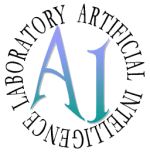|
One of our major
successes to date under the current ATR-URI project is in developing
multiresolution stochastic models for SAR imagery that accurately
capture the scale-to-scale statistical variability of speckle in SAR
imagery. In one application, we used models for natural clutter and
for man-made objects together with our fast statistical likelihood
calculation methods to develop an enhanced discrimination feature
that, when integrated into Lincoln Labs' ATR algorithm and tested on
a very large data set, resulted in a factor of 6 reduction in false
alarms over the previous best results. In the second application,
we used our models to segment natural clutter (trees and grass) and
to enhance anomalous pixels (due to man-made scatterers) that did
not produce the scale-to-scale variability consistent with natural
clutter. The results are very accurate segmentations and enhanced
visibility of anomalies as compared to widely used CFAR
methods.
We believe there are many additional applications for these
multiscale models. For example, anomalies that result from man-made
objects exhibit themselves as distinctive patterns across scale that
differ significantly from the scale-to-scale textural variations.
Consequently, chains of pixels across scale could in principle be
viewed as robust and statistically meaningful features that
can be further exploited for model-based recognition. We propose to
use multiscale features for higher level recognition and reasoning.
Classically, target models include geometrical constraints on the
appearance of features in space. In this new framework, models will
also include information about the appearance of features across
scale. The development of such models is a central objective of
this project. Once we have such models, we can use our
statistically optimal methods for evaluating likelihoods to evaluate
match scores for hypothesized models and poses.
|
